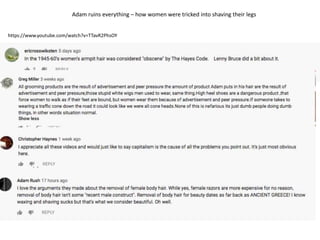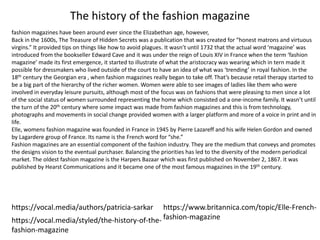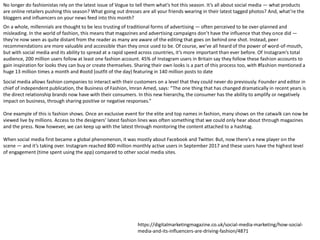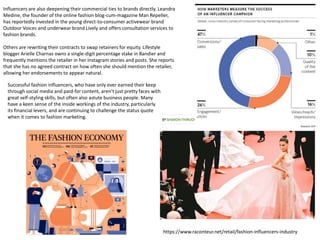Gillette played tricks in the early 20th century to convince women they needed to shave their legs by manipulating magazines and advertising. They falsely claimed shaving was a European trend to get women to buy razors. Social media has since changed how fashion trends spread by allowing individuals to both consume and contribute to trends online through influencers. Fast fashion brands also use social media to quickly react to emerging trends.

















